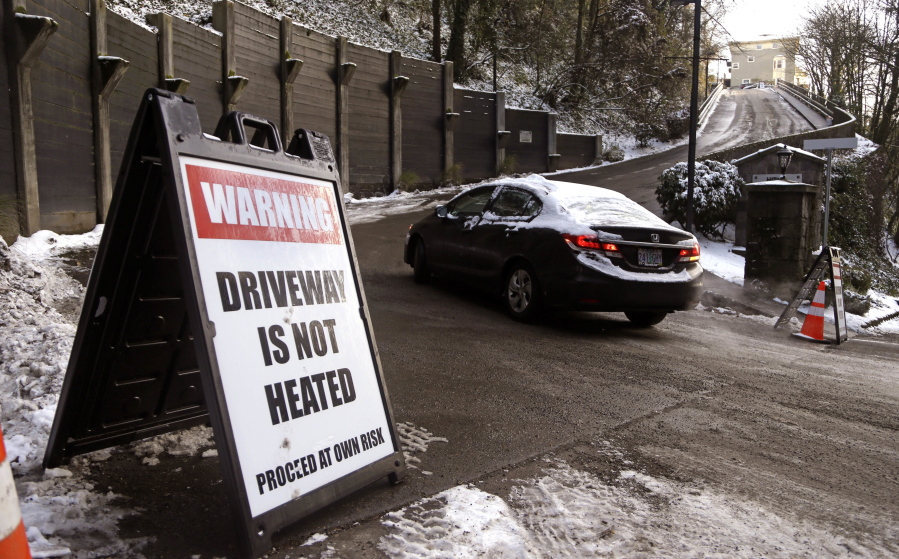PORTLAND — Three days after a couple inches of snow brought Portland to a standstill, state officials on Friday announced they will expand the use of rock salt on wintry roads — something many other states have done for decades.
“We are changing policy. We will use rock salt in very targeted, limited situations, in extreme weather conditions throughout the state,” said Don Hamilton, spokesman for the Oregon Department of Transportation.
Even though salt will be used only on a case-by-case basis, and not as a rule of thumb, it’s a significant change for Oregon.
Hamilton said he did not know how long Oregon has not used rock salt on its roads, but it’s likely been decades.
The state uses sand and a de-icing solution, but has eschewed rock salt out of environmental concerns, and because winter storms are rare in the most populated areas of the state.
For the past five years, stretches of highway from Idaho, Nevada and California into Oregon have been exceptions. Oregon officials began using salt at those borders as a pilot project.
Following the storm that brought Portland — Oregon’s largest city — to a halt on Wednesday, the state has decided to expand the pilot project.
Portland is sometimes made fun of for its difficulty in dealing with a winter storm. The city handles the rainy season fine. But when snow and ice fall, chaos can ensue.
It happened again this past Wednesday, when commuters began leaving the city en masse to try to beat a storm that was coming up from the south.
Trucks, cars and school buses were unable to budge for several hours as the snow fell. More than 100 crashes were reported Wednesday night.
Hilly areas were the most dangerous. Vehicles had trouble going up them, and there were numerous collisions as vehicles went out of control going down them.
Under the new policy, it’s those kinds of areas that would likely be treated with salt during the next winter storm.
Hamilton said that as the state expands its use of salt, it will examine the pros and cons — such as how it could affect bridges, people’s personal vehicles, and the environment.
Meanwhile, the sun came out in Portland on Friday. Snow was starting to melt, and things seemed to be coming back to normal.
But it’s still not over.
The Salvation Army in Portland said Friday that its holiday kettle donations were down dramatically because of recent bad weather. The charity makes 50 percent of its annual budget by sending volunteers to ring bells by the famous red kettles, but snow and ice kept many volunteers at home, it said.
The National Weather Service has issued a winter-weather advisory for Saturday in the Portland area because of freezing temperatures and the possibility of more snow.
In Eugene, a local utility reported that roughly 15,000 customers were still without power Friday as branches continued to snap in what’s considered Lane County’s worst ice storm in years.
In central Oregon, residents continued to dig out from a storm that dumped a foot or more of snow across the region. Schools in Redmond and Sisters were closed for a third day. Other districts delayed Friday’s opening bell.
——
Associated Press writer Gillian Flaccus contributed this report.



